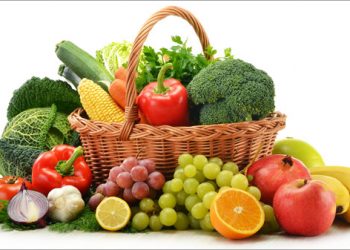Nutrition Tips for vegetarian athletes

- Vegetarian athletes must be sure to eat a variety of food choices including protein-rich and carbohydrate-rich foods at each meal. Vegetarian sources of protein and minerals typically found in meat include lentils, dried beans and peas (ready-to-use products are available), tofu, tempeh, textured vegetable (or soy) protein, and ready-made nut, soy or wheat-derived meat analogues. Many supermarkets now provide vegetarian styles of mince, sausages or “luncheon meats”.
- You may need help to experiment with vegetarian meat alternatives. Specialist vegetarian cookbooks can provide recipe ideas and special tips for cooking with legumes, soy and other vegetarian meat analogues. Sanitarium Health Food Company is the largest vegetarian company within Australia and New Zealand, and produce numerous nutrition resources including cookbooks, nutritional product analysis brochures and newsletters.
- If you have recently converted to a vegetarian diet, you may find that you lose weight that you didn’t intend to lose. This is a common result when bulky, high-fibre foods such as beans and legumes are used as a replacement for meat, chicken and fish. Athletes in heavy training or undergoing growth spurts have very high energy requirements. It is sometimes difficult to eat enough when meals are based on bulky food requiring lots of chewing. In this situation, it is good to find compact, energy-dense vegetarian foods – for example commercially available meat analogues, textured vegetable protein, tempeh, tofu, nuts, and peanut or nut butter. For lacto-ovo-vegetarians, low-fat milk, reduced-fat cheese and other low-fat dairy products are also low in bulk and energy dense. Soy alternatives to these dairy products are available for vegan athletes.
- Be sure to include protein rich foods at meals, especially at the midday meal. Many vegetarian athletes who are also lacto-ovo-vegetarians use cheese as a convenient meat alternative, whereas vegans may fail to use suitable protein alternatives altogether. As an athlete you may have limited time for meal preparation, particularly at lunch. Convenient meat alternatives for lunch include ready-prepared beans (eg. baked beans), nut and seed spreads, such as peanut butter, tahini and almond spread, eggs and ready-made vegetarian luncheon meats, derived from wheat gluten.
- If you use soy milk instead of cow’s milk, be sure to choose a calcium fortified option. Read the nutrition analysis panel and choose a soy milk that contains at least 100mg of calcium per 100ml of fluid. If you don’t drink cow’s milk or a calcium fortified soy milk, other suitable non-dairy calcium-rich alternatives include tofu, soy yoghurts and soy custards. Breakfast cereals and low oxalate green vegetables such as broccoli, and bok choy also provide calcium, but it is important to have an everyday eating plan that provides at least 3 serves of calcium-rich foods. For most people, “milks”, “yoghurts” and “cheeses” are the easiest foods to include in their eating plan.
- For the vegetarian athletes who are also Vegan: Vitamin B12 deficiency is a concern for strict vegan athletes. Dairy foods and eggs provide sufficient vitamin B12 for athletes following a lacto-ovo-vegetarian diet. Vegan vegetarian athletes should include a known source of vitamin B12 such as fortified soy milks or consider Vitamin B12 supplementation.
- For the Vegan: Dietary intake of riboflavin may be limited for vegan athletes, particularly those who avoid consuming soy milk and soy milk products. Rich sources of riboflavin for the vegan athlete include fortified breakfast cereals, grains, textured vegetable protein, soy milks, soy yoghurts, soy custards, soy cheeses and yeast extract spreads such as MarmiteTM and VegemiteTM.
- There are two forms of iron in the diet – haem iron which is found in animal derived foods such as red meat, chicken, liver and eggs, and non-haem iron found in breakfast cereals, bread, legumes, textured vegetable protein, nuts and green leafy vegetables. Haem iron is well absorbed by the body (15-35%) whereas non-haem iron is more poorly absorbed (2-8%). As many athletes have increased requirements for iron and non-haem iron sources are more poorly absorbed by the body compared with haem iron sources, it is important for vegetarian athletes to be aware of iron rich foods and factors that inhibit or enhance iron absorption.
- The best sources of iron in a vegetarian diet include breakfast cereals (especially those commercially fortified with iron – check the nutrition information panel), bread, textured vegetable protein, legumes, dried beans, gluten-based vegetarian meat analogues, nuts, dried fruits and green leafy vegetables. Including a rich source of vitamin C with meals such as orange juice or salad will enhance the absorption of non-haem iron from these meals. Be sure to avoid drinking tea and coffee with meals or adding unprocessed bran to meals as this will decrease the absorption of non-haem iron from meals.
Vegetarian athletes – Cooking Tips:
- Many traditional meat dishes can be easily converted into a vegetarian dish. Mince is easily replaced in recipes by using either brown or green lentils or textured vegetable protein. Replacing mince in a lasagne with textured vegetable protein or brown lentils provides a suitable alternative to meat.
- Tofu is a great substitute for chicken in most recipes. Although some people complain that tofu is bland and tasteless, there are many seasoned options on the market. You can also season tofu yourself, prior to cooking. Spray a pan with an oil spray, add garlic, ginger, soy sauce and sweet chilli sauce. Add the tofu, turning frequently and cook until browned.
- Tofu can also be marinated or coated in spices. Once you have cut the tofu into 1cm slabs, marinate in plum sauce, soy sauce and garlic. This is absolutely delicious when barbequed and served on a crusty bread roll with salad.
- Don’t be deterred by recipes using beef or chicken stock – vegetable stock is a suitable alternative. There are numerous ready-made vegetable stocks and vegetable stock cubes available in a variety of flavours.
- When using textured vegetable protein in a wet dish such as pasta sauce, don’t rehydrate it before use. To cut down on preparation time, simply add it straight to the recipe. You will need to add additional fluid to the recipe as the textured vegetable protein will absorb fluid.
- Nutmeat is a great substitute for beef in a stir-fry. Simply slice the nutmeat and then cut into cubes. As this is a ready prepared meat alternative it requires minimal cooking and should be added at the end of cooking.
- Canned lentils, kidney beans and three bean mixes are nutritious options that are great to use in cooking. If you have the time to soak them, dried lentils and beans are a cheaper option. If you decide to soak lentils or beans, make a double batch and freeze half. They will keep for up to three months. Canned options are more expensive however definitely decrease the recipe preparation time. They are found in the canned vegetable aisle in most supermarkets.
- The health food section of most supermarkets often provides an excellent array of vegetarian food options. Also check the fridge section for tofu, vegetarian sausages and luncheon slices.
Reliable vegetarian web sites include:
- The International Vegetarian Union has a comprehensive web site providing web site addresses for the various vegetarian societies throughout the world.
- The Vegetarian Resource Group
- The Vegan Society, based in the United Kingdom
Written by the AIS Sports Nutrition
